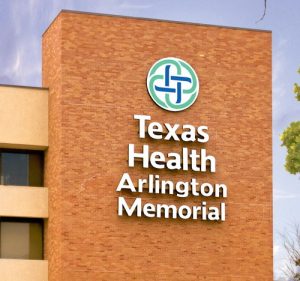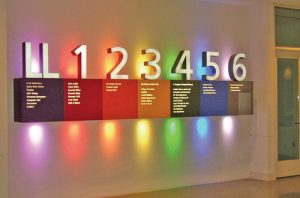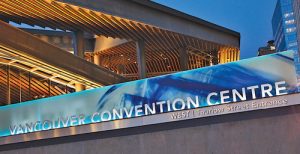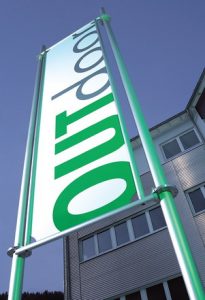Design
The Built Environment
Published
15 years agoon
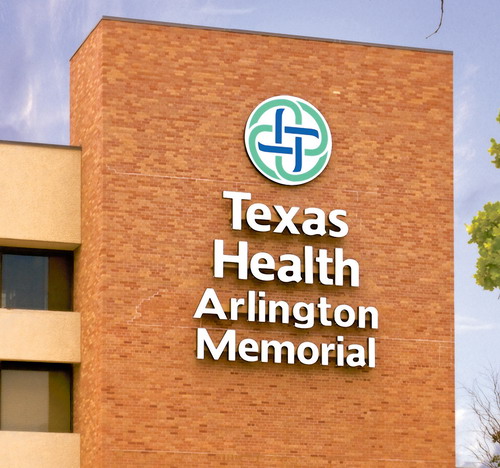
Developing an architectural-sign program requires a delicate balancing act for many reasons. First, many agendas often conflict with one another. Many architects erroneously believe signage defaces their masterpiece.
The end-user or his project representative, the general contractor, may relegate signage to the lower tier of priorities when crunching budgetary numbers. Local officials, who often concoct byzantine sign codes, may also not be receptive to a needed variance. Last, but not least, the environmental-graphic designer and sign fabricator routinely negotiate a minefield of codes, deadlines and budgets to deliver a satisfactory end product.
Because of the complex, intertwined nature of architectural graphics, a successful solution often requires diverse applications. Directional graphics, room-ID placards and other wayfinding play a vital role in familiarizing visitors to campus amenities, whereas exterior building graphics undertake the dual tasks of identifying the facility and providing graphic reinforcement for its architectural identity.
For this article, several component suppliers and environmental-graphics fabricators offer insights into trends, such as materials used in the market and how current and looming economic forces may impact this industry segment, as well as unique applications that underscore the diversity of architectural graphics.
National Signs
Providing healthcare services to a burgeoning population requires complex solutions. New public-health threats seemingly emerge daily, and many hospitals, clinics and outpatient facilities focus on certain healthcare aspects. Thus, herding patients into one central, city or county hospital has become obsolete for most locales.
Of course, these new or renovated facilities require signage, and healthcare signage requires differing solutions than standard programs, according to Al Ross, president of National Signs (Houston).
“People driving to hospitals are under considerable duress and need immediate help,” Ross said. “Signage in healthcare environments needs to be powerful and direct, yet relatively simple in design and extremely legible.”
He said healthcare represents approximately 30% of his company’s business – the bulk of its clients operate facilities in the south central and southwestern U.S. The company brands diverse facilities from multi-campus hospital chains to smaller, urgent-care units and specialized service providers. And, although no industry can be termed recession-proof, Ross said demand for medical care remains relatively constant.
National Signs recently executed a comprehensive rebranding campaign for Texas Health Resources’ – a faith-based, nonprofit, healthcare-facility operator – 13 facilities. In the first phase, National installed approximately 100 building signs on all its campuses, which required approximately three months. In the second phase, the company built and installed interior plaques and monuments, which entailed an additional two months’ work. The Douglas Group (Houston), which often partners with National Signs for healthcare projects, designed the signage.
The exterior-sign component includes channel letters fabricated with GE Lumination’s LEDs, which Ross said National uses because of their high energy efficiency, and acrylic faces clad with 3M’s perforated vinyl.
Ross said healthcare-facility decisionmakers typically embrace new technologies and materials to boost energy efficiency and visibility. However, he noted the sometimes complicated approval process: “A hospital must meet so many needs. Administrators, engineers, facility managers and other stakeholders all require input.”
He also cited looming sign-code problems: “Some cities have codes that limit the number of LED signs or total square footage of LED signage a property can have. This might be OK for a storefront, but
a 50-acre, hospital property has greater needs. LEDs are a terrific solution for the sign industry, but they’re still under attack from some public officials. LED message centers have become an increasingly vital part of healthcare sign systems; we’re in discussions with numerous hospital systems about deploying messageboards across their campuses.”
Although National Signs may only work on a sign program for a few months, Ross said such changeovers are typically years in the making. So, although the current economic downturn hasn’t yet profoundly impacted the company’s healthcare market, he said protracted tough times may jeopardize funding for healthcare-signage projects.
Precision Signs
Precision Signs (Amityville, NY) has fabricated wayfinding and architectural graphics for more than 25 years. Gary Anzalone, the company’s principal, described it as “creating signage for everything from the boiler room to the boardroom.”
The company’s material options include rigid plastic sheets and foamboards; photopolymers; stainless steel, aluminum and other metals, among others. Its repertoire of fabrication and decoration methods includes laser cutting and etching, screenprinting and engraving, among other methods. Most of its sign packages incorporate established graphic standards, and the company frequently collaborates with designers to develop solutions.
According to Anzalone, the architectural-sign market has endured a relatively consistent, across-the-board decline in the current economic climate: “There’s simply been a decline in new construction and renovation, which has created the domino effect of diminishing the need for architectural graphics. One way to stabilize your business in times like these is to manage your existing relationships and optimize your opportunities there.”
Concerns about green or sustainable graphics have permeated this market. As a founding member and Long Island chapter chairman of the U.S. Green Building Council, Anzalone is keenly aware of this development: “We unilaterally converted our facility to low-VOC coatings, and we’re constantly look-ing for ways to recycle more and produce less waste. There’s a lot of demand for recycled-content and green materials, and a lot of greenwashing and questionable claims about products’ environmental impact exists in the market. Cust-omers need to understand a material’s properties and possibilities. That said, price still trumps everything for many customers.”
However, Anzalone said achieving sustainability depends largely on a customer’s price range and sign requirements: “Fabricating screenprinted graphics requires far less energy consumption than an etched sign. However, screenprinted graphics may require frequent replacement; chemically etched metal will last decades. It’s important to make sure your customer understands his own needs as well as your capabilities.”
To bolster project efficiency and material reclamation, as well as provide material-cost savings that can be passed on to the customer, Anzalone said Precision frequently makes minor tweaks that enable fabrication with less substrate. He noted, “It’s not our goal to change design intent, but processing orders efficiently is a key priority.”
In the architectural-sign market, Anzalone has noticed two key trends. First, he said LEDs have become an increasingly prevalent lighting technology. However, he sees a continuing role for other lightsource choices: “When fiberoptics were introduced, people thought they would put neon out of business. LEDs have improved exponentially, especially the warmer whites many now achieve, but [LEDs and neon] both provide a solid solution for different applications.”
Second, Anzalone also noted a strong inclination towards clients sacrificing quality for a price point: “A lot of bid processes aren’t apples-to-apples comparisons. Low-ball bidders usually use
inferior materials, design and processes. Rework on such poor-quality jobs costs money in the long run. To help their long-term, corporate image, a company would do well to engage a designer to specify a program and then source the signs’ fabrication from a single provider.”
King Architectural Products
King Architectural Products (Bolton, ON, Canada) produces such materials as donor walls and static and dynamic directories, and modular-sign systems, among other products. John R. Steinmann, the company’s president, said donor walls represent a key motivational tool for would-be benefactors during tough economic times.
“Organizations are looking for new and innovative ways to attract donations,” he said. “Donor walls give patrons a tangible reward for their contributions, and the investment tends to be recouped relatively quickly.”
For such projects, Steinmann said laser-etched glass (natural or synthetic) or metal plaques comprise a standard solution, but he said electronic digital signage (EDS) has surged in popularity. “It wouldn’t be cost-effective to recognize everyone who gave a modest, $25 or $50 donation with a plaque, but touchscreens and their donor-recognition software provide the opportunity to recognize everyone who contributes.”
Whether using an Ethernet or Internet connection, which Steinmann said is more common when working in larger facilities, or a wireless modem, he said connectivity and user-friendly software makes EDS donor walls a feasible solution for most enterprises. Although plasma screens are sometimes used, LCD represents the prevalent technology with such applications.
And, like many things, bigger has become better: “Recently, a 15-in. screen was considered standard for EDS donor walls,” Steinmann said. “Now, 19 in. is the norm, and screens in the 32- to 45-in. range aren’t that uncommon. The combination of static signage with an electronic component represents a growing trend for donor programs.”
As a Canadian fabricator, he said his country lags somewhat because it lacks an ADA-style program with concrete, nationwide guidelines. However, King fulfills numerous stateside orders. Depending on a site’s specific environment, Steinmann said common solutions include etched photopolymer coupled with aluminum fixtures; a screenprinted or painted, clear photopolymer, such as Nova Polymers’ (West Caldwell, NJ) NovAcryl®; or etched zinc, a more economical choice than other metals, which he said tend to require lengthier fabrication without improved functionality.
“With ADA projects, we take a pretty conservative approach in terms of material selection,” Steinmann said. “If our experience tells us spec’d materials aren’t compatible or are too weighty for their surface, we’ll work with the designer to develop a better solution.”
He also noted that ADA and wayfinding graphics increasingly become a focal point for clients wishing to earn points toward Leadership in Energy and Environmental Design (LEED) credits. Although LEED standards devote little focus toward environmental graphics, usage of recycled, recyclable or locally sourced material may earn points toward this now prized certification.
For malls, college campuses, courthouses and other environments that require modular, detailed maps and directories, King produces customizable, dynamic and internally illuminated, static systems. Most of its static directories incorporate fluorescent light, but Steinmann said LEDs are gaining popularity despite their higher, initial cash outlay. For dynamic messaging, he said Flash-enabled programs have become popular eye-catchers for potential advertisers.
Steinmann said, “Hardware prices have come down, which makes them more appealing, and customers have become much more knowledgeable about software capabilities. They have particular functions in mind for their system and ask very specific questions about operability.”
ID Sign Systems
ID Sign Systems (Rochester, NY) offers various modular, interior sign substrates and fixtures that fulfill ADA, wayfinding and other modular, architectural-sign needs. Paul Dudley, the company’s president, said ID sources most of its 12 product lines from European suppliers who offer “clean” products that suit modern architecture – and meet demand from the EGD community. The company produces primarily aluminum products, with such variations as acrylic faces, changeable-insert spaces and internal, LED or fluorescent illumination.
“I think there’s more of a trend towards natural materials,” Dudley said. “This includes aluminum, steel or glass, and an anodized finish that reinforces the materials’ integrity. There’s also a definite move towards slimmer, more subtle architectural graphics.”
Dudley noted that environmentally friendly products had become a company focus: “We’re members of the Green Building Council, and meeting LEED guidelines has become a core focus. Low-VOC paints and other types of finishing materials, as well as using recycled-content materials wherever possible, are a key component to meeting these guidelines.”
ID is also developing a solar-lighting product for its exterior displays. Dudley said, “In the past, using solar power on signs meant sticking a photovoltaic panel on top. We’re working on a solution that merges the light supply with the display more aesthetically. In the architectural-sign market, it’s important to get your materials specified from the design community. It’s difficult to achieve that without an attractive product.”

SPONSORED VIDEO
Introducing the Sign Industry Podcast
The Sign Industry Podcast is a platform for every sign person out there — from the old-timers who bent neon and hand-lettered boats to those venturing into new technologies — we want to get their stories out for everyone to hear. Come join us and listen to stories, learn tricks or techniques, and get insights of what’s to come. We are the world’s second oldest profession. The folks who started the world’s oldest profession needed a sign.
You may like

NUtec Digital Ink Invests in Solar Energy for Facility

5 Reasons to Sell a Sign Company Plus 6 Options

21 Larry Albright Plasma Globes, Crackle Tubes and More
Subscribe

Bulletins
Get the most important news and business ideas from Signs of the Times magazine's news bulletin.
Most Popular
-

 Photo Gallery4 days ago
Photo Gallery4 days ago30 Snapshots of the 2024 ISA Sign Expo
-

 Tip Sheet2 weeks ago
Tip Sheet2 weeks agoAlways Brand Yourself and Wear Fewer Hats — Two of April’s Sign Tips
-

 Ask Signs of the Times6 days ago
Ask Signs of the Times6 days agoWhy Are Signs from Canva so Overloaded and Similar?
-

 Paula Fargo2 days ago
Paula Fargo2 days ago5 Reasons to Sell a Sign Company Plus 6 Options
-

 Real Deal2 weeks ago
Real Deal2 weeks agoA Woman Sign Company Owner Confronts a Sexist Wholesaler
-

 Benchmarks1 week ago
Benchmarks1 week ago6 Sports Venue Signs Deserving a Standing Ovation
-

 Photo Gallery2 days ago
Photo Gallery2 days ago21 Larry Albright Plasma Globes, Crackle Tubes and More
-

 Women in Signs2 weeks ago
Women in Signs2 weeks ago2024 Women in Signs: Megan Bradley
